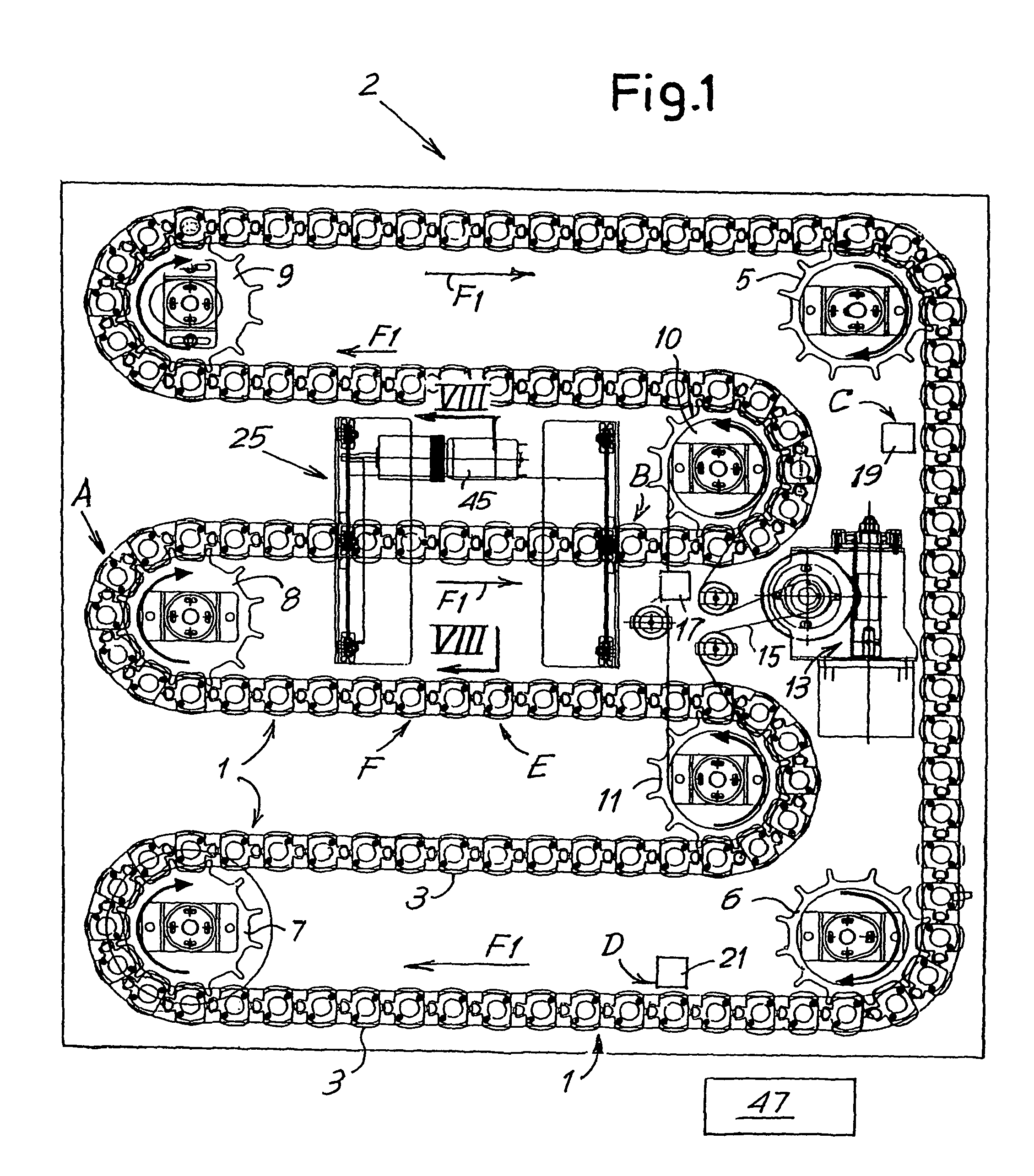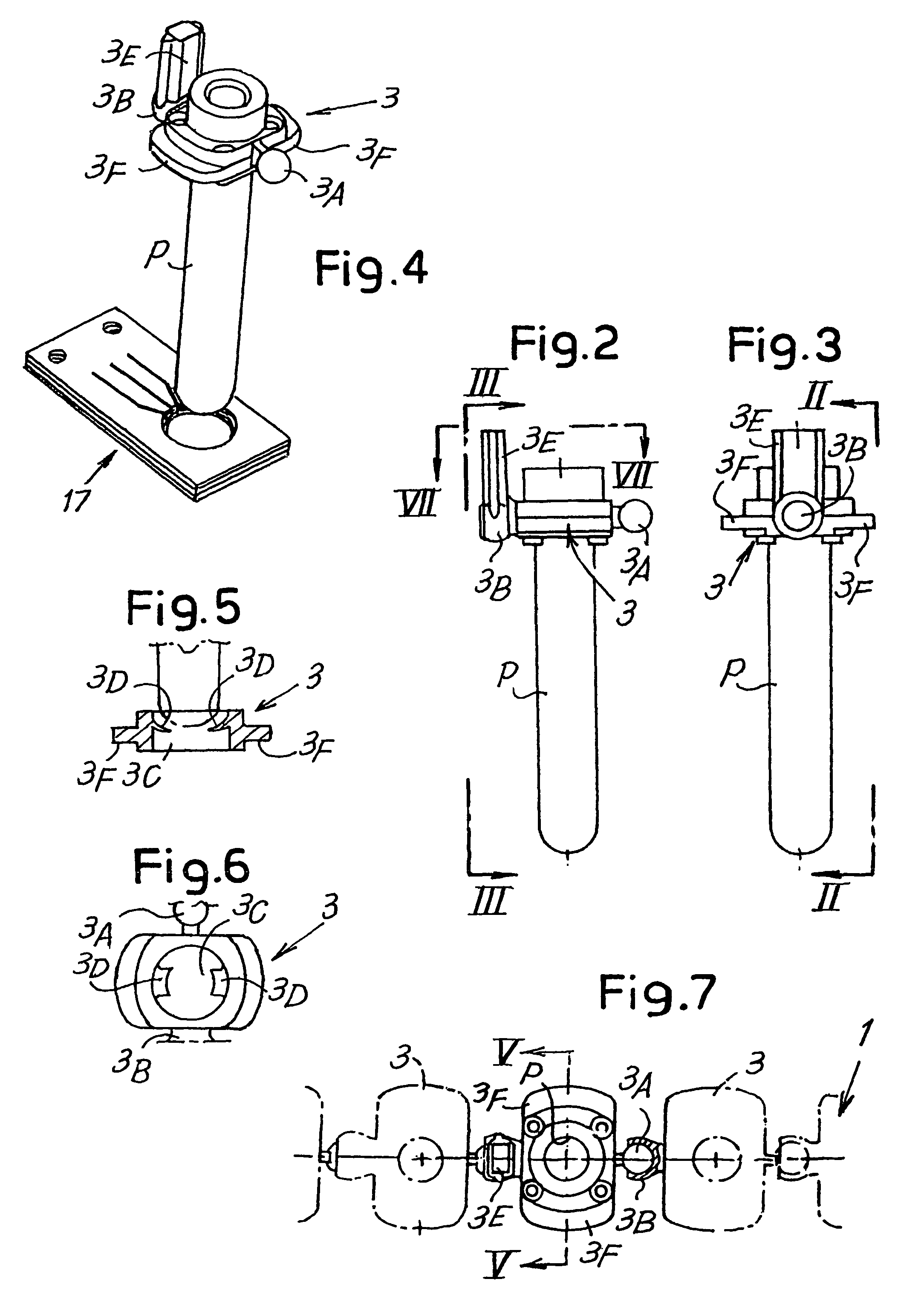Device for performing analyses on biological fluids and related method
a technology for biological fluids and instruments, applied in biochemistry instruments and processes, biochemistry apparatus and processes, diagnostics, etc., can solve the problems of inability to perform biological fluid analysis in series, increase the complexity of the appliance and the corresponding cost of its management, and increase the risk of contamination between the samples analyzed in series
- Summary
- Abstract
- Description
- Claims
- Application Information
AI Technical Summary
Benefits of technology
Problems solved by technology
Method used
Image
Examples
Embodiment Construction
[0071]Referring to the drawings in particular, FIGS. 1 through 18 the first embodiment, the device comprises two sections or units: the agitation, sedimentation and reading section or unit, comprising the flexible member with the holders for the test tubes, and a section or unit installed over it hereinafter called the setup unit. The latter could be omitted in the case of a more economical, less automated device. In the following paragraphs, the unit underneath, with the agitation, sedimentation and reading elements, is described first, followed by the optional setup unit with the respective means for transferring the test tubes.
[0072]Referring initially to FIGS. 1 to 11, the lower unit in the device, globally indicated by the numeral 2, comprises a flexible member composed of a chain formed by a series of single elements 3 that will be described in detail with reference to FIGS. 2 to 7. Each element 3 has a seat or holder for a respective test tube P, such that a plurality of test...
PUM
| Property | Measurement | Unit |
|---|---|---|
| flexible | aaaaa | aaaaa |
| sedimentation area | aaaaa | aaaaa |
| area | aaaaa | aaaaa |
Abstract
Description
Claims
Application Information
 Login to View More
Login to View More - R&D Engineer
- R&D Manager
- IP Professional
- Industry Leading Data Capabilities
- Powerful AI technology
- Patent DNA Extraction
Browse by: Latest US Patents, China's latest patents, Technical Efficacy Thesaurus, Application Domain, Technology Topic, Popular Technical Reports.
© 2024 PatSnap. All rights reserved.Legal|Privacy policy|Modern Slavery Act Transparency Statement|Sitemap|About US| Contact US: help@patsnap.com










